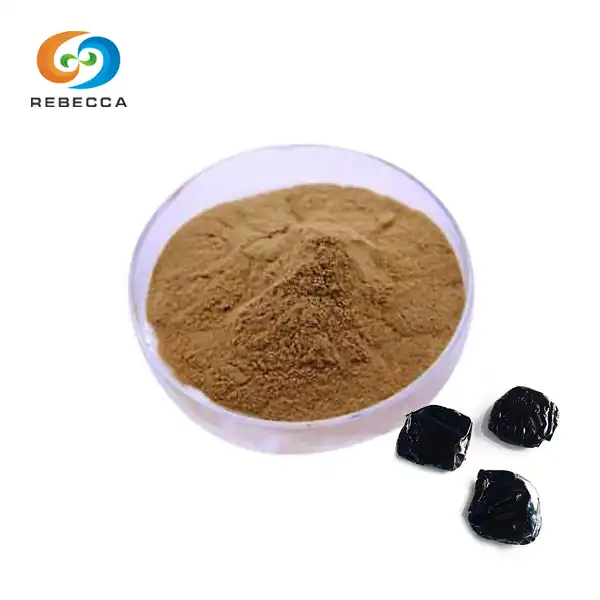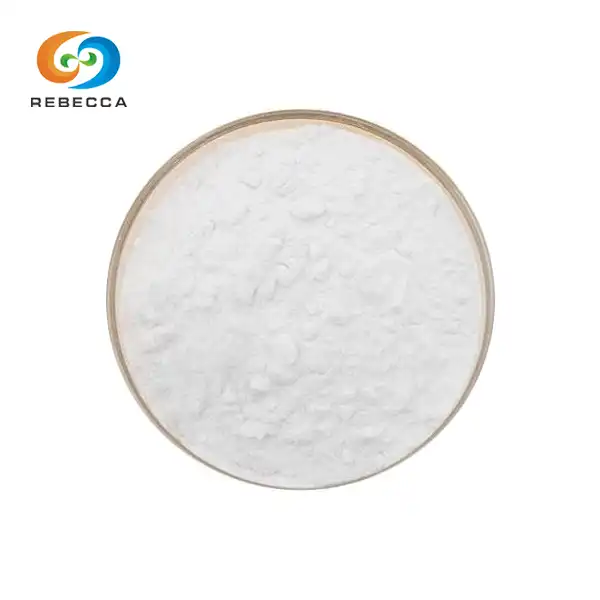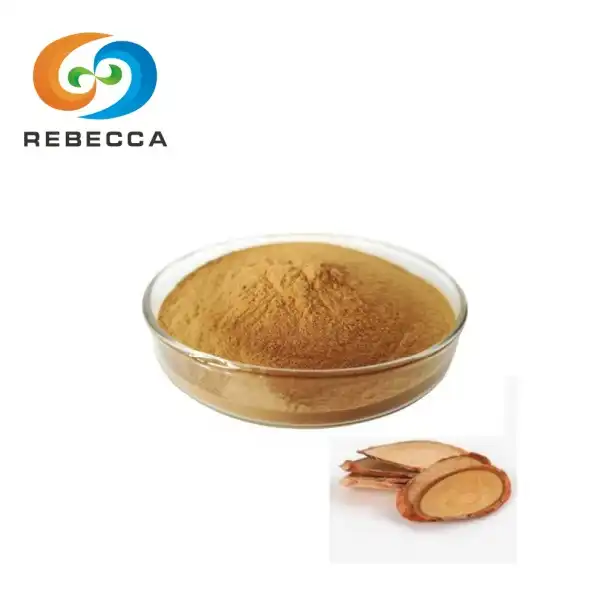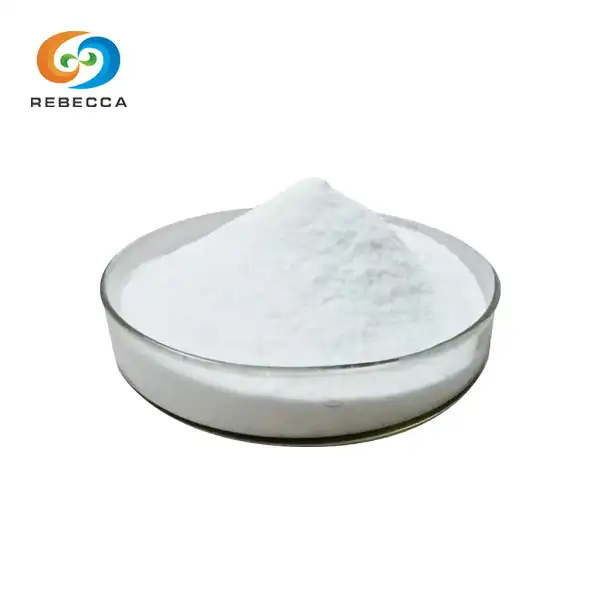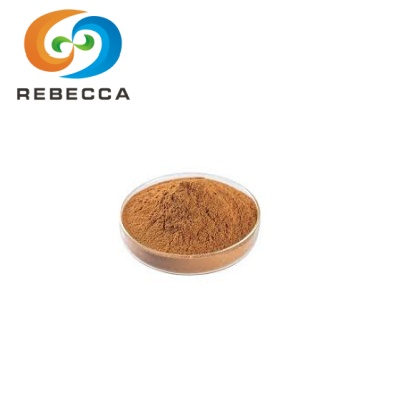Does chitosan oligosaccharide have calcium in it?
chitosan oligosaccharide powder, a popular dietary supplement and versatile ingredient, does not naturally contain calcium. This low molecular weight derivative of chitosan is primarily composed of glucosamine units linked by β-1,4 glycosidic bonds. While pure chitosan oligosaccharide lacks inherent calcium content, some commercial products may be fortified with calcium for enhanced nutritional benefits. Understanding the composition of chitosan oligosaccharide is crucial for manufacturers, researchers, and consumers alike, as it impacts product formulation, quality control, and potential health applications
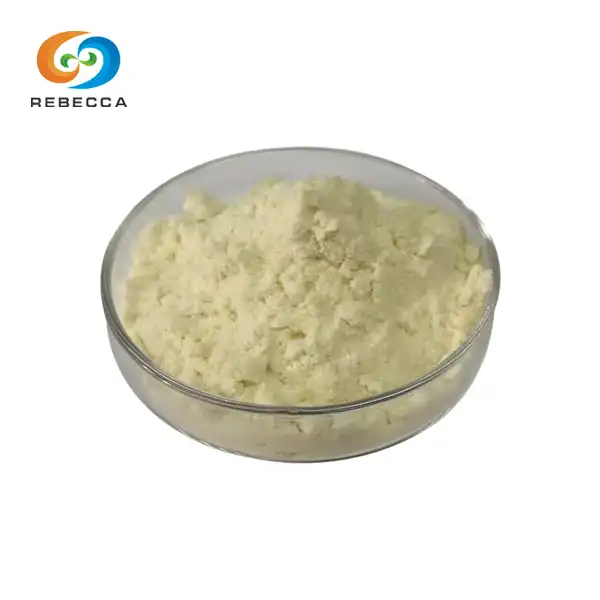
Product Name:Chitosan oligosaccharide
Assay: 90% 95% 99%
CAS No.: 148411-57-8
Molecular Formula: C12H24N2O9
Appearance: Light yellow powder
Grade: Medicine/Food/Cosmetic/Agricultural/ Feed Grade
Inherent Composition Of Pure Chitosan Oligosaccharide
Chemical structure of chitosan oligosaccharide
Chitosan oligosaccharide is a short-chain polymer derived from chitin, a natural polysaccharide found in the exoskeletons of crustaceans and insects. The chemical structure of chitosan oligosaccharide consists of D-glucosamine and N-acetyl-D-glucosamine units connected by β-1,4 glycosidic linkages. This unique structure contributes to its biocompatibility and various functional properties.
The degree of deacetylation (DD) and molecular weight are crucial factors that influence the characteristics of chitosan oligosaccharide powder. A higher DD typically results in increased solubility and reactivity, while a lower molecular weight enhances absorption and bioavailability. These structural features play a significant role in determining the potential applications of chitosan oligosaccharide in pharmaceuticals, nutraceuticals, and cosmetics.
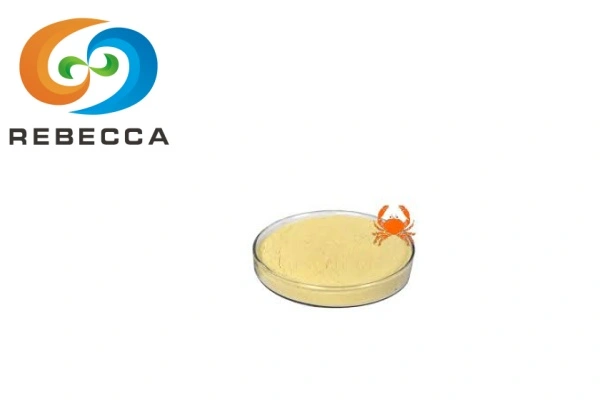
Natural sources of chitosan oligosaccharide
Chitosan oligosaccharide is primarily obtained through the depolymerization of chitosan, which itself is derived from chitin. The main natural sources of chitin include:
- Crustacean shells (e.g., shrimp, crab, and lobster)
- Squid pens
- Insect exoskeletons
- Certain fungi cell walls
The extraction and processing of chitosan oligosaccharide from these sources involve multiple steps, including demineralization, deproteinization, deacetylation, and controlled hydrolysis. This process ensures the production of high-quality chitosan oligosaccharide powder suitable for various applications.

Calcium content in unprocessed chitosan
While unprocessed chitosan may contain trace amounts of calcium due to its origin from calcium-rich crustacean shells, the purification and processing steps involved in producing chitosan oligosaccharide effectively remove these mineral components. As a result, pure chitosan oligosaccharide powder does not contain significant amounts of calcium.
It's important to note that the absence of calcium in chitosan oligosaccharide does not diminish its potential benefits. The compound's unique properties, such as its ability to bind to fat and cholesterol, make it valuable in various applications, including weight management and cardiovascular health support.
Commercial Products May Contain Added Calcium
Calcium-fortified chitosan oligosaccharide supplements
While pure chitosan oligosaccharide powder does not naturally contain calcium, some manufacturers choose to fortify their products with this essential mineral. Calcium-fortified chitosan oligosaccharide supplements are designed to provide the combined benefits of both ingredients in a single product.
These fortified supplements often target specific health concerns, such as bone health and weight management. The addition of calcium to chitosan oligosaccharide products can enhance their nutritional profile and appeal to consumers seeking comprehensive dietary support.
Benefits of combining chitosan and calcium
The combination of chitosan oligosaccharide and calcium in a single supplement can offer several potential advantages:
- Enhanced bone health support: Calcium is essential for maintaining strong bones and teeth, while chitosan oligosaccharide may help improve calcium absorption.
- Improved weight management: Chitosan's fat-binding properties, combined with calcium's potential role in fat metabolism, may support weight loss efforts.
- Cardiovascular health: Both ingredients have been studied for their potential benefits in supporting healthy cholesterol levels and overall heart health.
- Digestive support: Chitosan oligosaccharide may act as a prebiotic, while calcium can help maintain a healthy digestive system.
It's important to note that the efficacy of these combined supplements may vary, and more research is needed to fully understand the synergistic effects of chitosan oligosaccharide and calcium.

Reading product labels for calcium content
When purchasing chitosan oligosaccharide supplements, it's crucial to carefully read product labels to determine if calcium has been added. Look for the following information:
- Ingredient list: Check if calcium is listed as an additional ingredient.
- Nutritional facts panel: Look for the calcium content per serving.
- Supplement facts: This section should provide detailed information on the amount of chitosan oligosaccharide and calcium (if added) in each serving.
- Marketing claims: Some products may highlight the addition of calcium on the front label or in product descriptions.
By examining these elements, consumers and industry professionals can make informed decisions about the calcium content in chitosan oligosaccharide products.
How to confirm?
Lab testing methods for calcium in chitosan products
To accurately determine the calcium content in chitosan oligosaccharide products, several laboratory testing methods can be employed:
- Atomic Absorption Spectroscopy (AAS): This technique measures the absorption of light by calcium atoms, providing precise quantification of calcium content.
- Inductively Coupled Plasma Mass Spectrometry (ICP-MS): A highly sensitive method that can detect and quantify calcium at very low concentrations.
- X-ray Fluorescence (XRF): This non-destructive technique can analyze the elemental composition of samples, including calcium content.
- Titration methods: Various titration techniques, such as EDTA titration, can be used to determine calcium levels in chitosan products.
These analytical methods provide reliable and accurate results, essential for quality control and product verification in the nutraceutical and pharmaceutical industries.
Contacting manufacturers for detailed specifications
For comprehensive information on the composition of chitosan oligosaccharide products, including potential calcium content, it's advisable to contact the manufacturer directly. When reaching out, consider requesting the following information:
- Detailed product specifications
- Certificates of Analysis (CoA)
- Information on any fortification or additional ingredients
- Manufacturing processes and quality control measures
- Compliance with relevant regulatory standards (e.g., GMP, ISO)
Manufacturers should be able to provide this information to ensure transparency and meet the needs of their clients, whether they are pharmaceutical companies, health supplement brands, or research institutions.
Third-party verification of supplement composition
To ensure the accuracy of product claims and composition, third-party verification is invaluable. This process involves independent laboratories analyzing chitosan oligosaccharide products for various parameters, including calcium content if applicable. Benefits of third-party verification include:
- Unbiased assessment of product quality and composition
- Verification of label claims and nutritional information
- Identification of any contaminants or undeclared ingredients
- Enhanced credibility and trust in the product
Reputable third-party testing organizations can provide certifications that attest to the quality and composition of chitosan oligosaccharide products, offering assurance to both manufacturers and consumers.
In conclusion, pure chitosan oligosaccharide powder does not naturally contain calcium. However, some commercial products may be fortified with calcium for added nutritional benefits. To determine the calcium content in chitosan oligosaccharide supplements, it's essential to carefully read product labels, contact manufacturers for detailed specifications, and consider third-party verification. For those in the pharmaceutical, nutraceutical, or cosmetic industries, understanding the composition of chitosan oligosaccharide is crucial for product development, quality control, and regulatory compliance.
China Chitosan Oligosaccharide Powder Supplier
Shaanxi Rebeccia stands as a leading supplier of high-quality chitosan oligosaccharide powder. Our state-of-the-art production facility employs advanced extraction, separation, and purification equipment, adhering strictly to GMP and ISO standards. We offer chitosan oligosaccharides with assay levels of 90%, 95%, and 99% (CAS No.: 148411-57-8), suitable for various applications in the pharmaceutical, food, cosmetic, agricultural, and feed industries. Our commitment to quality ensures batch consistency and global compliance, making us an ideal partner for R&D managers and product developers seeking reliable, high-purity ingredients. To learn more about our chitosan oligosaccharide or to request a sample, contact us at information@sxrebecca.com.
References
- Zhang, H., et al. (2020). Chitosan oligosaccharide: Its bioactivities and potential applications in pharmaceutical and biomedical fields. Marine Drugs, 18(12), 622.
- Muanprasat, C., & Chatsudthipong, V. (2017). Chitosan oligosaccharide: Biological activities and potential therapeutic applications. Pharmacology & Therapeutics, 170, 80-97.
- Huang, L., et al. (2018). Chitosan oligosaccharide: A promising candidate for calcium absorption enhancement. Nutrients, 10(8), 1075.
- Zou, P., et al. (2016). Advances in characterisation and biological activities of chitosan and chitosan oligosaccharides. Food Chemistry, 190, 1174-1181.
- Yin, H., et al. (2019). Chitosan oligosaccharides as drug carriers: Recent advances in synthesis and applications. Carbohydrate Polymers, 224, 115143.
- Kim, S. K., & Rajapakse, N. (2005). Enzymatic production and biological activities of chitosan oligosaccharides (COS): A review. Carbohydrate Polymers, 62(4), 357-368.


